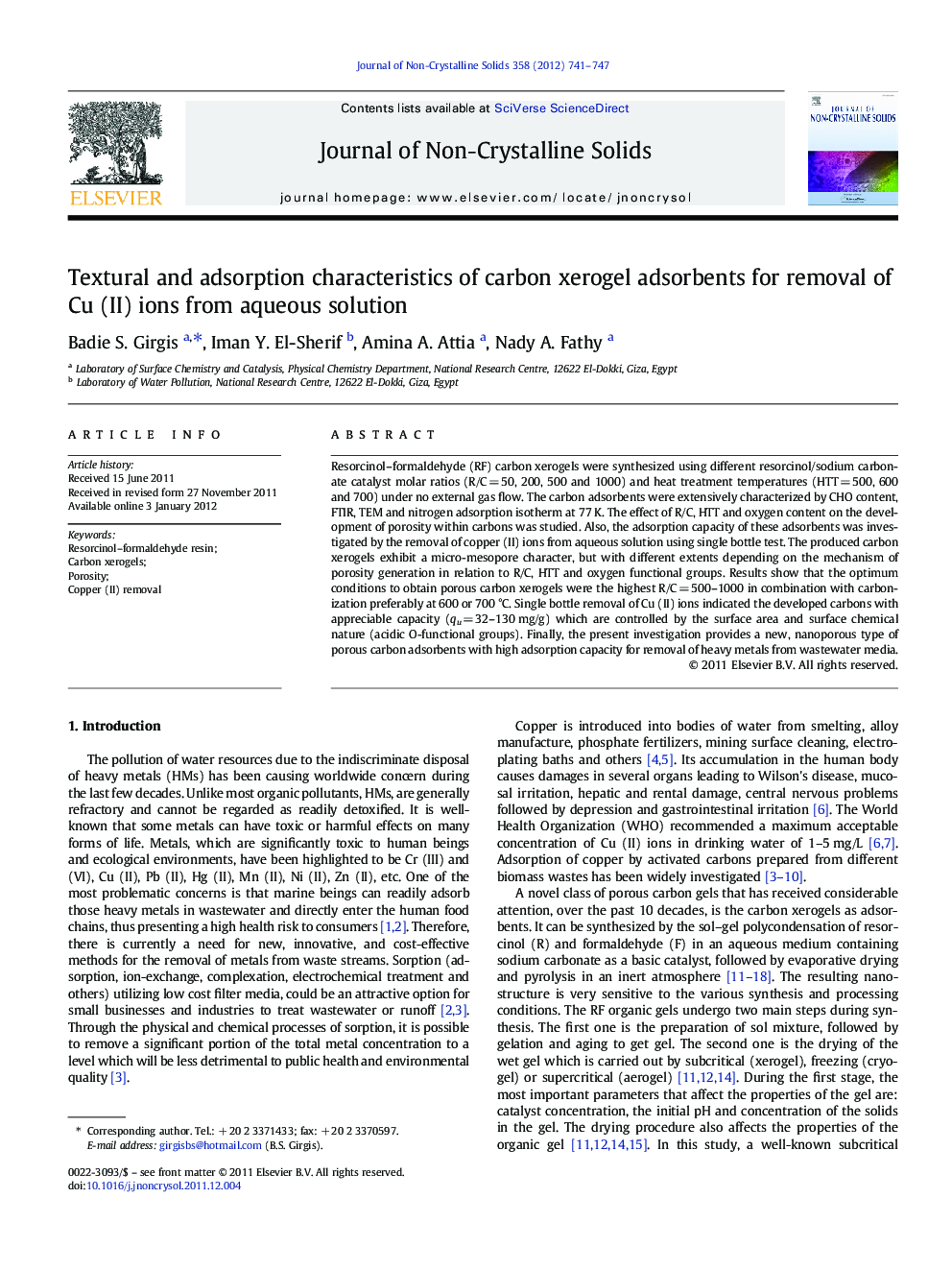| Article ID | Journal | Published Year | Pages | File Type |
|---|---|---|---|---|
| 1482364 | Journal of Non-Crystalline Solids | 2012 | 7 Pages |
Resorcinol–formaldehyde (RF) carbon xerogels were synthesized using different resorcinol/sodium carbonate catalyst molar ratios (R/C = 50, 200, 500 and 1000) and heat treatment temperatures (HTT = 500, 600 and 700) under no external gas flow. The carbon adsorbents were extensively characterized by CHO content, FTIR, TEM and nitrogen adsorption isotherm at 77 K. The effect of R/C, HTT and oxygen content on the development of porosity within carbons was studied. Also, the adsorption capacity of these adsorbents was investigated by the removal of copper (II) ions from aqueous solution using single bottle test. The produced carbon xerogels exhibit a micro-mesopore character, but with different extents depending on the mechanism of porosity generation in relation to R/C, HTT and oxygen functional groups. Results show that the optimum conditions to obtain porous carbon xerogels were the highest R/C = 500–1000 in combination with carbonization preferably at 600 or 700 °C. Single bottle removal of Cu (II) ions indicated the developed carbons with appreciable capacity (qu = 32–130 mg/g) which are controlled by the surface area and surface chemical nature (acidic O-functional groups). Finally, the present investigation provides a new, nanoporous type of porous carbon adsorbents with high adsorption capacity for removal of heavy metals from wastewater media.
► Nanoporous carbon xerogels were prepared by pyrolysis of resorcinol–formaldehyde aqueous gels with different R/C. ► The produced carbons proved to be promising adsorbents for removal of copper ions from aqueous solution. ► The adsorption capacity controlled by surface area and surface chemical nature.
